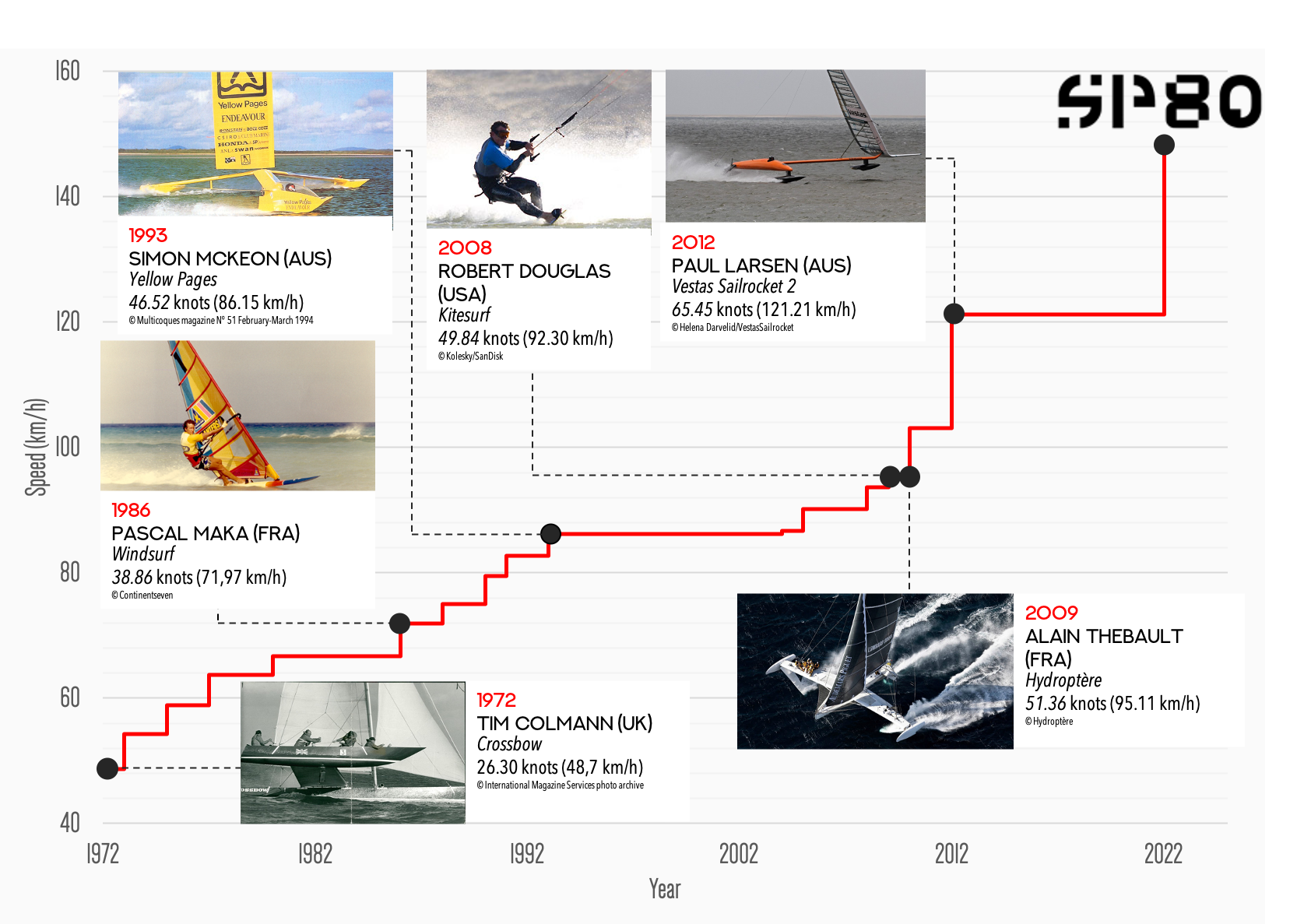History
In pursuit of the world sailing speed record
June 18th, 2020
The objective of the SP80 project is clear: become the fastest wind-powered boat in the world by 2022 to go down as the speed-record holder of the discipline. But why does this title matter so much to us? To understand the roots that give meaning to today’s team and our motivation, we can delve into the history of the world sailing speed record. The events that make it up are carved by human and technological prowess, these are the exploits that have cradled and nursed today’s project, and have given us an appetite for speed!
Among all the sailing speed records that exist, SP80 intends to tackle the pinnacle event: the 500m speed record. The rules are simple: be propelled by wind only and have a pilot on board. It is therefore essential to combine innovation, efficiency and safety to become the fastest boat in the world over the distance!
The Hydroptère succeeded in compounding this winning alchemy which enabled it to exceed the mythical 100 km/h mark in 2009 for the first time in the history of sailing. This flying trimaran imagined by Eric Tabarly and developed by Alain Thébault was able to draw on the knowledge of the Ecole Polytechnique Fédérale de Lausanne (EPFL) to break a longstanding barrier.
Building a revolutionary boat has not always been the standard way of trying out for the 500m record. Ever since the year 1972 when the record was created, windsurfers and kitesurfers have established themselves as serious competitors. With sails that possess such a wide range of motion and positioning, kitesurfers can harness the wind better than anyone else and seemed untouchable at the beginning of the 2000s. However, their limitation quickly became evident to be the amount of power that a person could hold, a problem that a boat, a condensed set of technologies, could solve.
In November 2012, Vestas Sailrocket 2 reached a record speed of 121.1 km/h (65.45 knots) over 500m, relegating its prevailing competitors by more than 18 km/h. To achieve this, the boat was based an effective concept: making sure that the forces on the sail in the air and on the main foil in the water remained constantly aligned. A true guarantee of stability and therefore safety, although the application of this concept alone would not have been enough to make history! An unconventional form of foil was also developed to get rid of the limiting physical phenomena that occur at such speeds, particularly cavitation.
In order to beat the world sailing speed record, SP80 now wants to combine the power of a kite with the reliability and stability of a boat. Taking the best of both concepts will allow us to reach 80 knots in 2022, or about 150 km/h on the water! It should be noted that SP80 will not be alone in the race for the record, as former holders have already announced that they are also embarking on such an adventure: Alexandre Caizergues, Antoine Albeau and the Hydroptère V2 have set up campaigns for the next few years. The challenge is therefore all the greater and more exciting: may the best team be the fastest!
Aurore Kerr, head of communication
David Sanchez, member of performance prediction team
Zoé Daguin, newsletter author
Picture in header: © VESTAS SAILROCKET TEAM

Copyright 2025 | SP80 | All Rights Reserved


